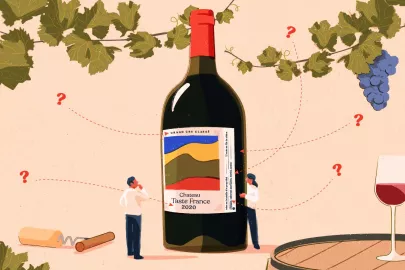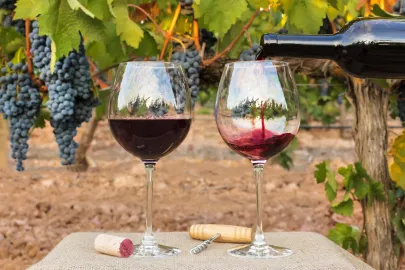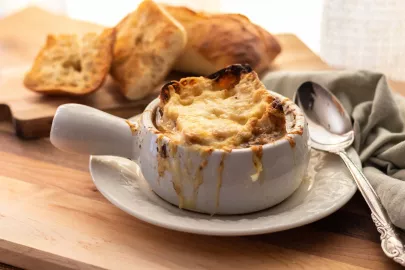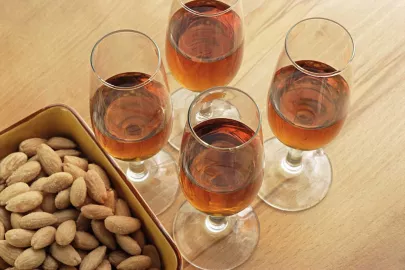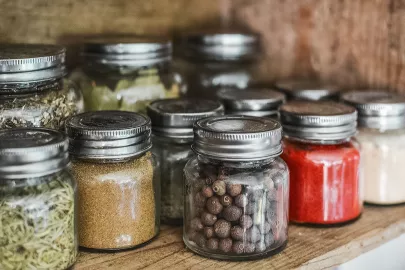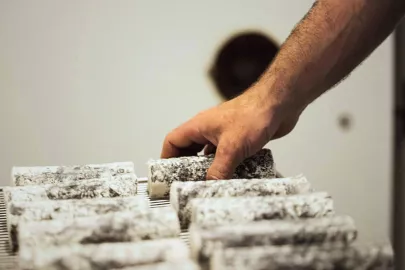Leftover red wine? I used half a bottle to make braised pork

France, as a world-renowned wine-producer, is home to a considerable number of native grape varieties and wines. Some people even say that "if you tried a different wine every night, you would need eight years to drink them all". But today we are not talking about hard-core wine knowledge, instead let's talk about using wine to make food. Although "leftover wine" sounds a bit weird, accidents do happen, and sometimes people don't manage to drink the whole bottle. Instead of worrying about how long it will remain drinkable, just read on. Whether you are a wine lover or just a beginner, we have some solutions that will certainly satisfy you.
- A delicious stew
Adding wine to stews is not unknown. Here's the standard operating procedure used happily for many generations: fry red meat (beef or pork) until the surface is golden; add wine (red or white will do) to the ingredients, close the lid and cook on low heat for a few hours; wait, wait, wait (check your phones); finish!
The flavor is a bit boring? That's okay, just add some onions, carrots, garlic, broth, or bay leaves...you just can't go wrong. Want an even stronger flavor? Add more wine!
For those of us who know Shanghai cuisine, even the classic braised pork you would find in the restaurant "Long Tang Flavor" can be changed by adding some red wine! Starting with the normal recipe, add half a bottle or a large glass of wine, depending on how much stew you have. This will give the braised pork a beautiful red color, and the taste will be soft and sticky, with a light fruity fragrance .
Remember, if the red wine is not sufficient for the meat you have prepared, you can add water. Do not use too much red wine or the meat may start to blacken.
- Dried fruit pickled in wine
Wine-pickled raisins are pretty commonplace in China. But dried figs, cranberries, apricots... basically any and all dried fruit (or nuts) are also worth trying.
Soak the dried fruit in wine, preferably red wine. Prepare a clean glass bottle and add a handful of your chosen dried fruit, and all the left over wine, followed by a few sprigs of thyme to your taste, then wait a few weeks for the flavor to mature! (We recommend removing the thyme or other herbs after the first week)
The wine-pickled dried fruit can be paired with ice cream, yoghurt, pound cake, or other sweets. It will instantly upgrade your dessert, giving it a rich, mature flavor.
- Cocktails
Cocktails are the perfect solution if the leftover wine happens to fill a glass. Add some berries (if you can pre-mash them, the flavor will be even better) to the wine glass, along with some soda water (or ginger ale), and your favorite spirits, such as Aperol or Campari. Then add some ice cubes and drink!
We recommend pairing white wine with citrus fruits such as lemon and grapefruit, or pear and pineapple. It will really bring out a lovely balanced color, making the drink very attractive.
- Wine smoothies
Because the freezing point of alcohol is relatively low, wine won't freeze solid if you put it in the freezer. This means that wine smoothies are super easy! When you have made your smoothie, add your favorite syrup, honey, or the wine-pickled dried fruit mentioned above. This makes for a delicious dessert!
Pour the wine into a shallow baking tray or crisper to shorten the freezing time. After freezing for an hour, use a spoon or fork to loosen the semi-frozen smoothie every half an hour, so that the texture of the finished product will be more uniform, just like frozen candy floss.
- Wine syrup
Use a ratio of wine to sugar of 2:1. The recommended wine varieties are Cabernet Sauvignon or Merlot, which can be flavored with a small amount of cinnamon and cloves.
Put the mixture of wine, sugar, cinnamon, and cloves together in a small pot. Bring it to the boil over a medium heat. Stir constantly until the sugar is completely melted. Bring to a low heat and cook until small bubbles are generated and the texture is thick. Store in a glass bottle. Add the finished wine syrup to any dessert or muffin to make it super delicious!
Some notes...
"Red or white?"
If the recipe says that white wine should be used, never switch to red wine.
White wine is suitable for reductions, and will not produce a bitter taste, even after long periods of cooking. For example, it is used as a key ingredient in Beurre Blanc (a French cream sauce). Because red wine contains more tannins, it can easily become bitter after long periods of cooking. Reduce no more than half of the juice when cooking with red wine (except for stewing or when working with oil-rich ingredients as they will help balance the flavor).
Use wine that is still fresh
The wine must be fresh. This means you shouldn't use wine that has started to go sour or has completely lost its fruity taste. If you have decided that you will use leftover wine for cooking, you can pour it into other sealable bottles or containers to reduce the contact it makes with the air. If the wine is stored for a few days, it's completely okay, but if it's left for a few months, it's totally not okay (laughs).
Getting out of your comfort zone
It is not necessary to choose your usual wine for cooking. Many people do not like sweet wines, but they are still a great choice for cooking.
Select wine based on cooking time
If dishes need to be cooked for a long time, such as slow cooking, stewing, etc., we recommend using a more ordinary wine. If the dish involves quick frying or making a reduction, we recommend using relatively expensive wines. Another little trick is to add a little wine just before taking out a stew to enhance its taste. The flavor and overall quality of the food will definitely increase.
Apart from the wine...
If the recipe suggests using a large amount of wine to cook, generally you will still need other ingredients such as stock, light cream, or tomato paste to balance out the flavor of the food. Here's a quick recipe for a family chef: regularly freeze any leftover wine in an ice cube tray for later use. Throw some in when you are cooking and feel you need to increase the taste. Suddenly your cooking skills will greatly increase.
Longer is not better
Curing meat with wine can make it soft and tender, but if it is done for more than a few hours, the flavour of the meat will go off.
Don't go wrong with our recommendations for red and white wines
Choose white wine that has not been aged in oak barrels, is dry, and has a refreshing acidity and you won't go far wrong. A good example is Pinot Gris; medium-bodied Merlot with moderate tannins is also very versatile. The rich aroma of Riesling and other similar wines mean they are not so versatile, but you can try using them to make sauces, desserts or cocktails.
The following recommendations are summarized by senior editor Chris Morocco of the American magazine Bon Appétit based on his many years of culinary experience.
Red and white wine which won't lead you astray
Contributor

Editor

